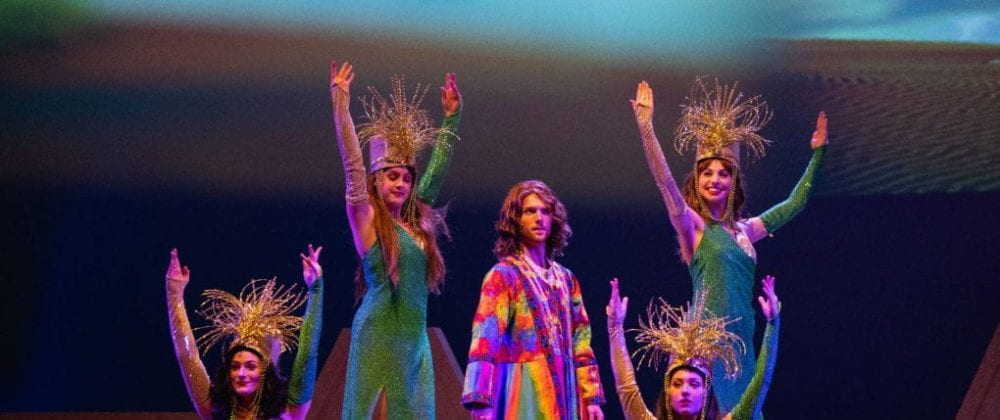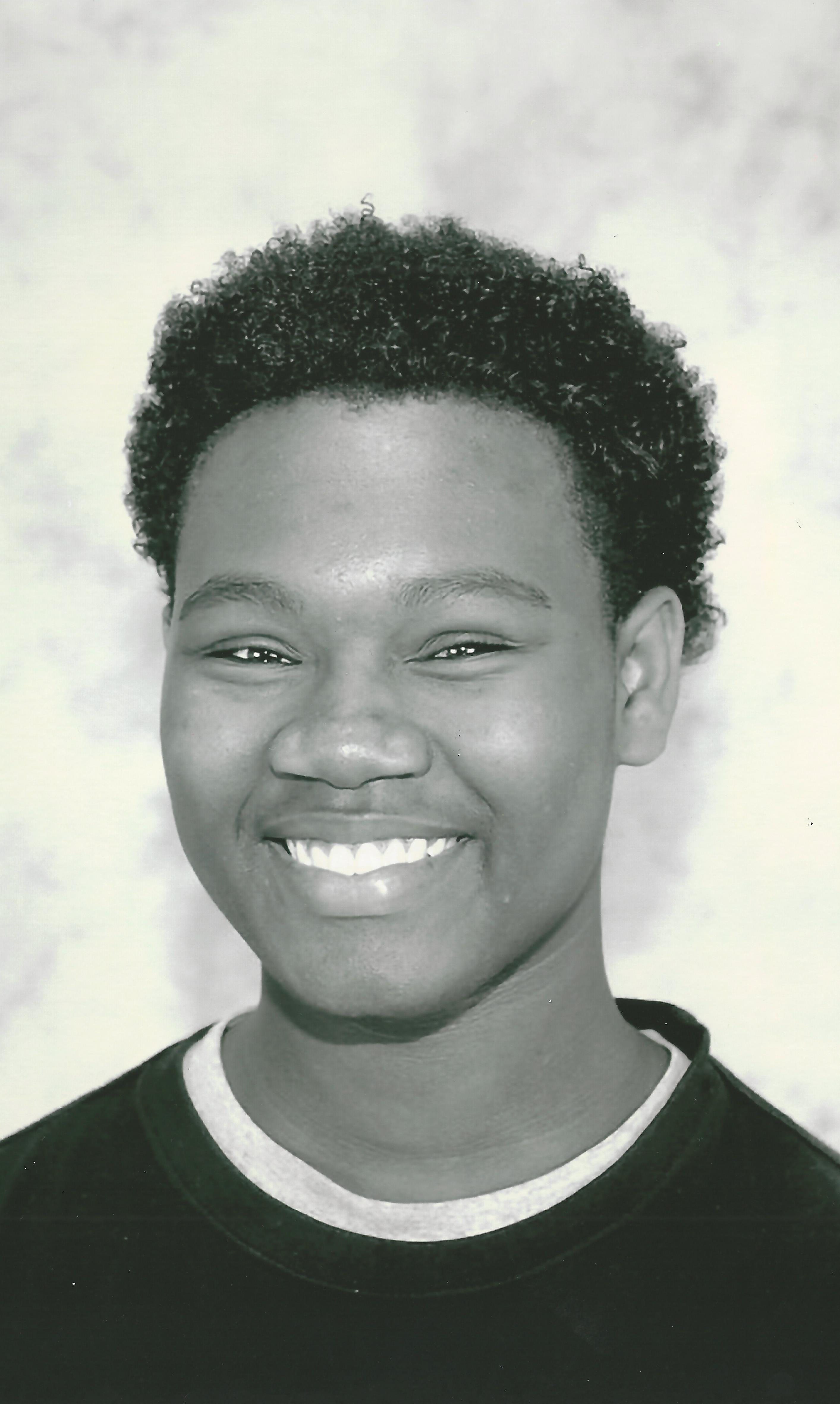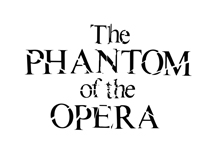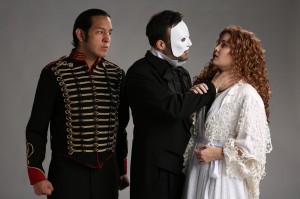THROUGH 7/9: CPCC’s Comedy of Tenors Has Plenty of Doors and Plenty of Farce
June 30, 2017 – Charlotte, NC:
Ken Ludwig has written over 20 plays and musicals over the past quarter of a century, nine of which have now been presented in Charlotte. While the books for his two Gershwin musicals, Crazy for You and An American in Paris, display his craftsmanship, Ludwig’s most enduring comedy is undoubtedly his first Broadway hit, Lend Me a Tenor. First produced in 1989, Tenor was converted to a London musical in 2011, after a Broadway revival the previous season. So why shouldn’t the playwright entertain the notion of recycling his Tenor characters into a sequel? The idea evidently seems so natural to Central Piedmont Community College Summer Theatre, an organization that rarely produces a musical or a comedy that isn’t at least a decade old, that it has brought A Comedy of Tenors to Pease Auditorium less than two years after it premiered in Cleveland.
Ludwig brings back the arrogant and flamboyant Italian tenor Tito Merelli and his wife, Maria, both highly passionate and usually squabbling. Impresario Henry Saunders, formerly the GM of the Cleveland Grand Opera, is now bringing the greatest concert in the history of opera to Paris, still as nervous, domineering, and hot-tempered as before. Saunders is provoked, but it isn’t by his son-in-law and former assistant, Max, whose singing prowess was discovered in Cleveland a farce ago. Max is now on the bill as one of the four tenors who will wow Paris, but his father-in-law feels free to yank him out of rehearsals anyway to deal with the crisis du jour.
Fresh blood stirs up the fresh complications and misunderstandings. Back in Cleveland, it was Saunders’ daughter who was the victim of mistaken identities. Now she’s back in Cleveland, married to Max, and on the verge of delivering his first child. Instead, it’s Tito’s daughter, Mimi, who is our ingénue, embarking on a similar path of confusion. She’s in love with the third tenor on the bill, Carlo, but they haven’t yet summoned the nerve to divulge their marriage plans to her parents. In the hurly-burly of evading discovery by the Merellis, Carlo tells Maria of his plans to marry her daughter, but the eavesdropping Tito gets a vivid impression that his wife has become Carlo’s sex slave. On the flipside of this specious reason for jealousy, a real one happens to be in town, Russian soprano Tatiana Racon, Tito’s old flame. Almost forgot: on the day of the performance, the fourth tenor, Jussi Björling, cancels to attend his mother’s funeral. They will need to replace him.
Besides the repeating characters, the hotel suite setting, performer dropouts, and the last-minute frenzy of preparing to go onstage, there are other holdover motifs that link Ludwig’s Tenor farces. Both of them have pesky bellhops, both have fast-forward mash-ups of the entire show before the final bows, and whether your access route is Shakespeare or Verdi, there are comical uses of Othello to watch out for in both pieces – more subtly done in this newer farce. Under the direction of Carey Kugler, that’s about all the subtlety you will find, for the script offers an abundance of physical comedy. Slapping, frantic hiding, broad suggestions of sexual activity, and a plateful of tongue are all on the menu. There is scurrying galore during the countdown to the concert, and Biff Edge’s scenic design provides four doors plus a patio looking out on the outdoors for farcical entrances and exits.
This is 1936, so Ludwig could easily be forgiven for making his operatic saga all about the men. Yet, the women aren’t altogether objectified, and they certainly aren’t marginalized. The Russian temptress Racon can carry herself like an established diva, and we sense that Mimi isn’t destined to be a hausfrau either, since she is embarking on a movie career – a happenstance that enables costume designer Rachel Hines to expand the fashion gallery beyond eveningwear, formalwear, and lingerie. Nor is Maria, Ludwig’s Desdemona, the same pure and worshipful seraph we find in Shakespeare. In addition to the vamping, it’s the women who have the lionesses’ share of the slapping and straddling.
Drugged and suicidal in the previous Lend Me a Tenor, Tito emerges as our hero in the sequel, supplanting Max. Surely this is Craig Estep‘s finest hour in straight comedy as Tito and his lookalike, the pathologically talkative bellhop, though a couple of provisos might be added. First, he does sing here, since the three tenors are destined to rehearse the “Libiamo!” from La Traviata, and Estep’s previous hookup with James K. Flynn in Monty Python’s Spamalot was certainly a CPCC Summer Theatre gem in 2013. Flynn could have been eyeing the Tito role for himself, yet he’s perfectly cast as Saunders, just sympathetic enough in panic mode to prevent us from finding him loathsome in his overbearing moments. Winston Smith doesn’t have as much to do as Max as he would have had in Lend Me, but when it came time to sing the trio, he proved capable of holding his own with Estep. As it turns out, Max isn’t in total eclipse. Eventually, he’s the one who untangles all the twists that Ludwig has put in the plot. Gabe Saienni got far more of a workout as Carlo, hiding from his future in-laws and fleeing from Tito’s deluded jealousy, so he had to sustain his terror of Tito while remaining worthy of Mimi’s love. The only real problem in Saienni’s performance was in the trio, where he was vocally a weak link.
If I could have heard them better, I would probably find myself saying that Taffy Allen as Maria and Amanda Becker as Mimi were marvelous. Loudness wasn’t the issue. I’m leaning toward my wife Sue’s theory on Allen: the thickness of her Italian accent was probably the main barrier between Maria and me. Allen has crossed over into midlife just enough to make her credible as Tito’s wife, and her aggressive attempts to reconcile with her husband were even funnier than her previous fawning on Carlo. Deep into Act II, when sexual activity runs rampant, Allen got a chance to be jealous that she definitely didn’t waste. Becker’s audibility problems seemed to stem from a rush to adhere to Kugler’s snappy pacing. But I found her attitude delectable, both as a daughter and future bride, and her jealousy, punctuated by right-handed and left-handed slaps, could hardly have been better when Mimi suspected Carlo of carrying on with her mom.
Caroline Renfro didn’t enter the fray as Racon until Act II, but it was pretty funny when she did, since the glamorous diva instantly devoured the incredulous bellhop with her pent-up passion, mistaking him for Tito. Old flame or not, Renfro had the moves and the looks to make that old flame new. Still in a generous mood, Racon agrees to add her soprano voice to the concert, presumably because the bellhop will be a new-made star after it’s over. I’m not sure that this extra episode was as savvy as the rest of Ludwig’s script, since it required a pair of hurried scene changes. At Pease Auditorium, this final segment literally hit a snag when the curtain that had been drawn over the hotel suite to simulate the backstage scene at the opera house got stuck before we reverted to the hotel for the fast-forward rehash of the entire play. When frantic actors and stagehands finally freed to curtain so it could slide back into the wings, the audience burst into applause. More laughter ensued as Kugler’s recap, even faster than the pace that had previously prevailed, was tossed off with an overacted style truly befitting a silent film.
A Comedy of Tenors continues through Sunday, July 9




